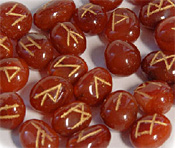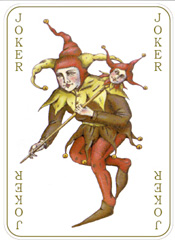
|
November 2008
When I heard that my older brother, Lester, had come home from Union Theological Seminary, not for a break, but for good, I was shocked. He’d always been active in church groups, and his best friend Jack was studying to be a minister. “Why?” I asked him. “Because Nan, “he said and paused. “Because I went to the library and I found out that every country in the world has its own flood story.” I must have looked blank. He continued, “That story of Noah and the Ark is just one of thousands of stories. That’s all they are, stories,” he wailed in despair. My young mind had to ponder this for several years before I understood how narrow the world we’d been brought up in was. And it was years until I could see how much we were bound by “black-and-white” thinking. This thinking goes, “My religion is true while yours is not.” That belief was challenged with a sneer in Bob Dylan’s “With God on Our Side,” a song on the record album my older brother gave me after he’d left the seminary. Unlike my brother, my interest was in stories. I found the diversity of flood stories intriguing. Not seeing a future job in writing or teaching literature, however, I ended up becoming a librarian. It was as a librarian that I became interested in ancient lore or wisdom from pre-Christian times. I saw my first Tarot reading on a visit to Chicago. I was walking back from the El to my room in a uptown college dorm after attending my first professional library conference downtown. It was a warm clear summer evening, perfect to linger outside. I noticed a group of teenagers intent on doing something with cards on the steps of the dorm. Curious, I slowed down. The young man in the group was making quite an impression on the young ladies as he turned over each card and read their futures. Much giggling accompanied the deep seriousness of the group.
I saw in these “divination” tools, the two competing structures for arranging books in American libraries. I won’t go into the whole talk about this that I gave at one of the last library conferences I attended. Here’s just a brief summary before I get to Astrology and how it connects with the three other ancient “divination” or as I call them, “communication of wisdom” tools in part II of this article for next month’s Daykeeper. The original way of systematically organizing books in the American library was the Dewey Decimal system. This system is used in public libraries and some smaller college collections. Dewey is a “closed” system, kind of like the pigeonholes one sorts mail into. Because of this, it didn’t suit larger libraries that needed more than the 10 broad categories of knowledge offered by the Dewey classification. The need for a larger system led librarians in Washington D.C. to devise the Library of Congress system (or LC system) for classifying all knowledge found in books. Perhaps not coincidentally, some of those librarians had a close connection to the Masonic brotherhood that spread the Tarot in Europe and America in the 19th and 20th centuries. LC has a structure very similar to that of the Major Arcana of the Tarot. The Library of Congress (LC) system is an “open” system. It uses letters of the English alphabet for subjects (22 letters for broad categories along with 4 letters for local collections). More importantly it dropped the Dewey decimal point. Modern and future knowledge can easily be inserted into LC.’s “open” system. For example, another letter, perhaps a Greek letter, could be used for a brand new field of study. Because of the decimal point, the Dewey system can’t expand like this. Dewey is bounded, closed. In closed systems you can’t just add one thing. For example, you can’t add a 65th hexagram to the I Ching. That’s because each 6-line hexagram of the I Ching is made by combining two out of the 8 total 3-line trigrams. At the very least you’d have to add a ninth trigram, then combine it with the previous eight trigrams to make a variation on the I Ching that has 81 (9x9) hexagrams instead of the original 64 (8x8) hexagrams. And what would such a new trigram look like? It’s hard to imagine. Another example of a closed system that would be hard to expand is the Minor Arcana. These ancient cards resemble our modern playing card decks. You can’t add just one card to a card deck. For example, you must put in four more cards, one in each suit (e.g., an 11 of hearts, spades, clubs or diamonds), or you must expand the suits by adding a fifth suit (e.g., ace-king of “mirrors”).
While examining ancient systems of communicating information through use of symbols, I noticed that the I Ching, with it’s combination of 8 trigrams to form 64 hexagrams, was identical in structure with the Minor Arcana “court cards” (Page, Knight, Queen, and King). The court cards in the four suits form a square 4x4 matrix of 16 cards. The I Ching forms a square 8x8 matrix of 64 hexagrams. In having a symmetrical closed structure, the I Ching and the Minor Arcana of the Tarot are very like the Dewey Decimal system. This is because Dewey relies on groups of three numbers on each side of the decimal point to indicate the major and minor topics inside a book. The major subject of the book is found in the three numbers to the left of the decimal. The minor subjects of the book are in groups of three numbers to the right of the decimal point. The same three numbers may mean the same thing, but with differing importance depending on which side of the decimal they’re on. Just as the Dewey numbers indicate what a book is about by their position within the entire Dewey numerical hierarchy, so each I Ching hexagram and Minor Arcana card takes on additional meaning because of where it sits within the structures of those two ancient systems. The Runes, on the other hand, are very like the open Library of Congress system. Runes can be arranged in a circle, triangle or in a straight line or as you wish. They can be added to, and many bags of runes include blank stones. This same flexibility is found in the Major Arcana cards of the Tarot. People change the order of the cards and they add, alter the images on, or delete cards when they create a new Major Arcana deck. Unlike in “closed” structures of knowledge, individual items in “open” systems generally don’t take on any added meaning from their position within the scheme. Their meaning stays the same even when they’re moved to a new position in the system. At first the Tarot intrigued me the most because it consisted of two distinct parts: one closed, one open. I thought the Tarot was far superior to other ancient systems because of this complex duality. Only later did I come see the complexity of astrology and understand that the I Ching also had its own kind of amazing magic in the way it is organized. That magic is the use of multi-faceted thinking. We’ll see this kind of multi-faceted thinking again when we look at the ideas of an Indian mathematician and the “father of library science,” S.R. Ranganathan, and his system for organizing all knowledge. But first, in the next article, we’ll look at how Astrology fits into the “open” and “closed” systems discussed here. Astrology is intimately linked with all the other ancient and modern systems for organizing wisdom, and it is especially close with the I Ching. In the conclusion to the series we’ll get to the common linkage among ancient structures for organizing and communicating information and what that might mean for our understanding of our past history and our futures.
Copyright © 2008 by Nancy K. Humphreys Postscript on “either/or” thinking In my September review of Wisdom Chi Gung in Daykeeper I discussed the pitfall of “either/or” thinking. As an example of the need for multi-faceted thinking such as the I Ching uses, I brought up my encounters with many homeless people who live in their cars and just need a safe place to sleep. I was quite happy to see there was an article about this in the October 2008 AARP Bulletin. “No Place to Call Home” reports on three cities that are thinking outside the box. Santa Barbara, California opened a dozen municipal and private parking lots every night for outdoor lodging for homeless people to sleep in their vehicles. Two social workers check the lots each night. This program is modeled on one that originated in Eugene, Oregon. Cleveland, Ohio is making use of foreclosed properties as shelters for homeless people. The foreclosure crisis is nationwide and no doubt will be increasing. Let’s hope more cities can come up with creative solutions like these! |
 Years later someone gave me a Tarot deck of cards and book. Reading the “stories” behind each card, I was charmed. Then I discovered rune stones, the stones with letters of the ancient Nordic alphabet. And finally the I Ching, a geometric system of patterns of broken and whole lines combined in groups of three and six. Each of these ancient devices came from very different parts of the world, but something instantly connected them in my mind.
Years later someone gave me a Tarot deck of cards and book. Reading the “stories” behind each card, I was charmed. Then I discovered rune stones, the stones with letters of the ancient Nordic alphabet. And finally the I Ching, a geometric system of patterns of broken and whole lines combined in groups of three and six. Each of these ancient devices came from very different parts of the world, but something instantly connected them in my mind.  But what about the Joker, you ask? It’s just one card. The “Joker” card, said to be a remnant of the Major Arcana “Fool” card in the Tarot, does not fit into the organizational system of playing cards; it disrupts that system. The Fool livens up the game because it changes the rules of card games.
But what about the Joker, you ask? It’s just one card. The “Joker” card, said to be a remnant of the Major Arcana “Fool” card in the Tarot, does not fit into the organizational system of playing cards; it disrupts that system. The Fool livens up the game because it changes the rules of card games.